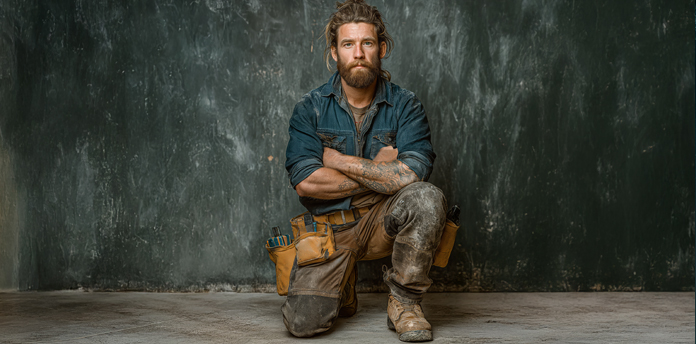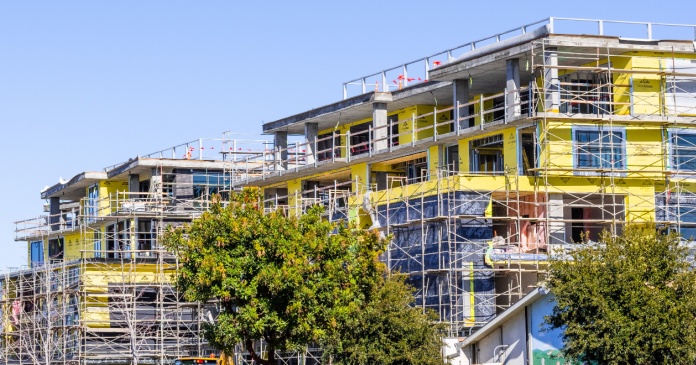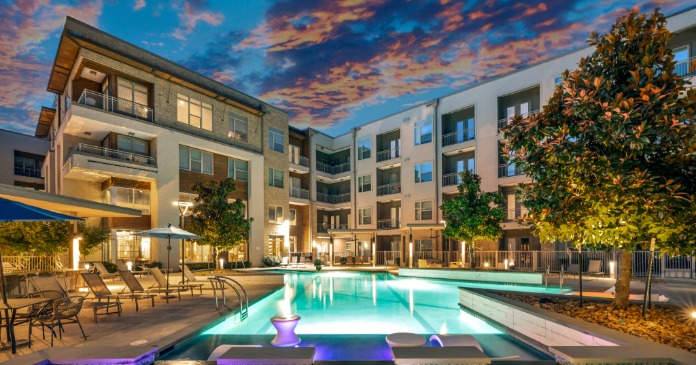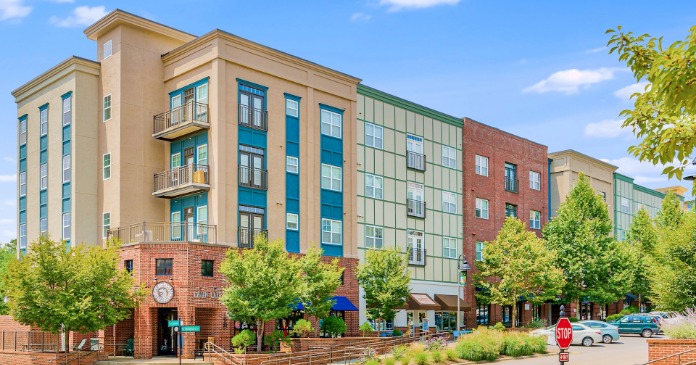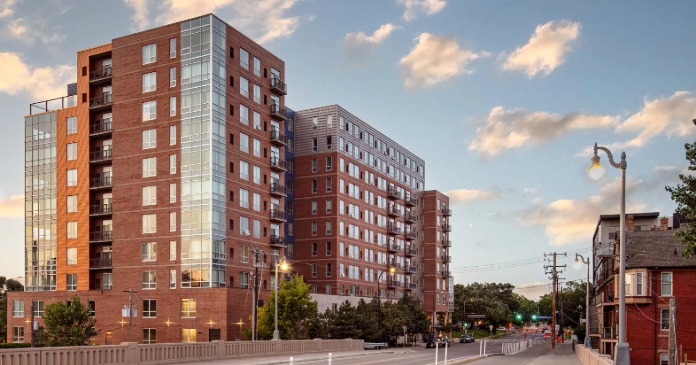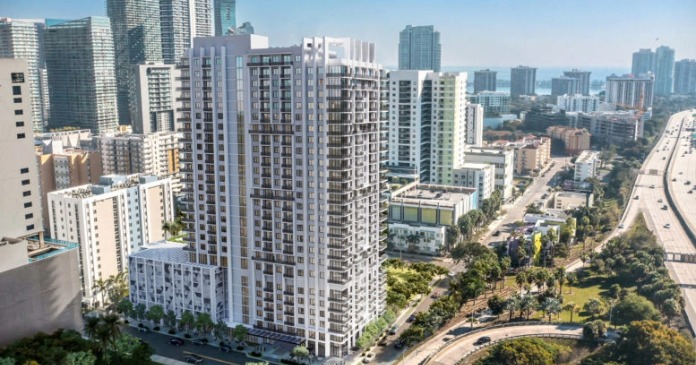Few cities have the power to evoke lifestyle images the way Hollywood does. Or did. Until recently the city of cinematic legend was one of the most undesirable addresses in all of Los Angeles. With record high crime rates and an overall sleaze factor, locals stayed away and Hollywood hopefuls opted for trendier neighborhoods. Holly-wood never made it to anyone’s Top 10 Places to Live list.
The opening of the ultra hip, luxurious mixed use Sunset + Vine property by The Bond Companies is restoring Hollywood’s allure. The intersection of Sunset + Vine is now the core of an overall rehaul that promises to restore glamour to the Hollywood address. AP talked with Chairman Larry Bond about the vision behind the project, its success, and his next birthing.
AP: What inspired Sunset + Vine?
Larry: Hollywood is an image in peoples’ minds around the world and there was no actual place in Hollywood that matched those expectations. People would arrive here, especially the young entertainment crowd coming to get into the business, and there was no place for them to live.
We wanted to do something bold and daring. We sought to capture the imagination of a very creative segment of our population here in Hollywood. The only way to do it was to be as innovative as they are in their own daily life. We looked to Los Angeles and around the world for inspiration and to create an international feel. We ultimately focused on bringing the best of San Francisco, New York and Shanghai to Hollywood.
The architecture is contemporary and extremely modern. We took cues from the existing building which was the original home of ABC Radio. We incorporated the building’s facade mirroring the old and blending in the new to create a stylistic result.
We retained a phenomenal architect, Steve Nakada of Nakada Associates. He likes to engage the community and work with the developer in creating a stunning project. We also looked at this development beyond just today; we considered Sunset + Vine in terms of the next several generations. This is a cornerstone property in the community. Sunset and Vine is a famous address. If it’s not the most famous corner in L.A., it’s a close second. We sought to excite and inspire people, make them think: “I want to live here.”
AP: You had another hurdle to overcome. Beyond not meeting the Hollywood dream, this neighborhood was downright rough.
Larry: There was a high crime rate before we came in and people didn’t feel safe in the community. People wouldn’t walk to work, didn’t go out at night, and they didn’t want to live here. We had to change that perception fast, while matching it to reality.
The biggest urban design decision we made was to incorporate street-entry retail. We created an opportunity for pedestrians to walk from the sidewalk directly into a retail store. We did not create a mall; we did not want to trap people inside. We wanted street lights and activity. We saw the opportunity to use lighting techniques to create a well-lit environment, which is also a crime deterrent. As an added measure, we’ve included security cameras and 24-hour surveillance system.
I didn’t realize how good of a job we did until we saw the statistics. Last year I was contacted by William Bratton, chief of police of Los Angeles. He wanted to hold a press conference at Sunset + Vine to talk about crime.
Imagine it. We’re about to open the project in a few months. The retail had been open for 6 or 7 months and the Chief of Police wants to talk about crime. I didn’t know which way he was going to go with it. I hesitantly asked what he was going to report knowing it had the potential to damage us. He told me crime had dropped 58% in one year since we opened up the retail portion of Sunset + Vine. Hollywood now ranks as safe as Westside Los Angeles. He wanted to commend our project design, and the local police for a job well done.
AP: Your residents are the world’s image-makers. They’re among the most high-tech, creative, well-traveled people in the world. How do you convince them to live here?
Larry: We hit all the senses. Our residents are incredibly sophisticated and jaded. We began by working with Universal Studios to launch our residential units. We hosted the “after party” for the movie The Bourne Supremacy. The movie premiered at the ArcLight Theater down the street and then we shut down Vine Street and had a block party with Matt Damon, George Clooney and Ben Affleck. All the stars came out.
We’ve had model runway events here. Our idea is to take the glamour and hipness of Hollywood’s entertainment industry, and tie it into real estate in a way that hasn’t ever been done.
AP: Who else is playing in Hollywood these days?
Larry: That’s the exciting part. While we took a chance, I’m excited that other developers and financial partners are now coming in to continue the renaissance. Just across the street, Legacy is developing a mega-project including a W Hotel and condos. Across the street from that, a New York developer is building a couple of high-rise towers with 700 residential units. On the southeast corner from us, the CIM group which is backed by CalPERS (California Public Employees’ Retirement System) and CalSTR (California State Teachers’ Retirement System) are converting an office tower to residential.
Suddenly there is more than $1 billion in development within three blocks. I don’t know any other place in the United States like that. If we’re one of the reasons that’s happening, that’s good social responsibility and we’re proud.
AP: What else did you do that is good for Hollywood?
Larry: We’ve legitimized residential in an area where there wasn’t any for 50 years. We didn’t just redefine our corner; we tried to redefine Hollywood as a vital place to live. I’m proud of our team. It takes a thousand people to do a project this size, from architects, to engineers, to people in the community.
We’ve spent a lot of time cultivating support from the community. I believe it’s now unanimous because of things like our sign program.
We have a controversial signage program. There are a number of billboards on the exterior of our project. This design wasn’t about revenue. The signs create a visual connection to historical Hollywood with those great neon signs; signage is the great language of the streets. To get people to come here at night we had to create an exciting, visual dialog.
We created a signage program that generated excitement. What’s interesting is that there’s a billboard moratorium in the city of Los Angeles right now. So we explained to the development agency, the City Council, and community members what we were trying to accomplish. One of my greatest meetings was the second one we had with 17 architects on the Hollywood Architectural Review Board. They had asked for numerous design changes after our first presentation, so this was the follow up meeting with our modified design. After an hour of reviewing the modified project, they actually criticized us again saying we didn’t put enough signage on the building. We loved hearing that.
AP: Have you met your financial goals?
Larry: We recently sold the property. The original plan was to own it long-term. We had two wonderful institutional partners on the project: the California State Issue Retirement System and Canyon Johnson Urban Fund, which is a partnership between Canyon Capitol in Beverly Hills and Magic Johnson.
The focus was to build it, own it for several years, stabilize the asset and then potentially exit. The property profile is an attractive asset for a lot of institutional funds and corporate real estate investors. Soon after it was completed we were being courted. Opportunity presented itself and we closed out with a rather high return. We completed the project for $115M and sold it for $160M.
AP: Were there design obstacles to overcome in building Sunset + Vine?
Larry: Building mixed-use housing in a commercial zone was a challenge. But we worked closely with the city to change zoning. The wave of mixed use wasn’t in place when we started this project. We needed many approvals at the City Council and community development agency level. Local councilman, Eric Garcetti is a true visionary who understood our project from the get go. He knew how to make change. He rolled out the red carpet wherever possible to make it happen. He was an active partner and government was an active partner in the development of the project. To have a successful project in urban areas you have to have government as an active partner or it’s not going to happen.
Our second obstacle was the absence of legitimate retail in Hollywood. We had to convince mass retailers like Bed, Bath & Beyond and Borders that Hollywood is a great place to do business. These anchor stores shied away from the neighborhood in the past because of all the notoriety.
AP: The outdoor living component is spectacular. The pool especially. It’s an oasis in the middle of Hollywood.
Larry: I told the interior designer, Karen Steuben of Inovus Design (see page 45), to show us anything that would make people feel like they were in South Beach, while at the pool. We have a projection system that shows movies on the wall surrounding the pool. It’s the new urban outdoor drive-in movie; it combines nostalgia and hipness. It’s so cool to hang out at the pool at night and watch movies and music videos.
Our public art piece is also very visual. I call it the world’s largest lava lamp. The artist is Steve Appleton. Again, everything here is visually compelling as we are dealing with a very artistic community.
AP: What’s next for your company? Where are you looking now?
Larry: The focus of our company is to create one-of-a-kind real estate developments. We do not aspire to create an exact, same look in twenty-seven places around the country. We customize development and design to the community in which we are operating. Every one of our projects has a unique architectural feeling that addresses an individual community’s needs.
Our next major project is in LA’s Chinatown. We’ve hit our stride in entering ethnically-focused areas. A lot of people try to create projects for the masses. We create projects that attract the masses to experience neighborhoods of interest, and Chinatown is an historic neighborhood of interest. There is a unique architectural style and vocabulary with restaurants, new jazz clubs and art galleries there. We’re going to create a very cool project that won’t only cater to the Chinese, but to the greater community.
We’re building the city’s first Chinese cultural center that combines community, residential and retail. For 30 years, the community has been trying to build one. Quite frankly, it took an outsider like us to bring the community together and make it happen. There are many different perspectives and a tremendous amount of pride and emotion in a community center. The region in China from which your family came generally dictates a perspective.
We’re building around 250 residential units with 40,000 square feet of restaurants and retail with a primary focus on the nightlife. We need to inject new energy into Chinatown. It’s unlike Hollywood, which had clubs and restaurants, but no retail. What’s missing in Chinatown is new blood, new energy. Third generation children of those who grew up in Chinatown are now dispersed throughout the city. For those and everyone else who wants a taste of Chinatown and loves the richness of the culture, there’s nowhere to go at night. There are a couple of restaurants here and there, but no center project to pull it all together and create new energy. Our focus is restaurants and retail.
We recently went on an inspiring fact-finding mission to China. We want to create a project similar to one we saw in Shanghai, where the restaurants, bars and nightlife all work together.
In L.A., we will bring in individual operators to work in tandem to create a district similar to New Orleans. It will be an entertainment district with nightclubs and restaurants. We will create a new, first generation space to go to.
Our contribution to Los Angeles is to create key projects that let people go one night to Hollywood, one night to Chinatown and one night to another part of the city. We’re going into more ethnically specific areas, uncovering the richness of these cultures and making them accessible to everyone.
We aren’t trying to homogenize things. We’re actually bringing out the cool aspects of different cultures. Our concept is to highlight and accentuate them. We break ground in Chinatown this Fall.
The Chinatown project is a vision for the community over the next 75 years. We’re tied into the Metro station, which is an above grade station. This gives the project even greater importance.
We like the challenges of a highly visible project. We’ve spent over three years getting the support of 38 separate community groups in Chinatown. It was difficult. But we’re proud that we are the first company in the history of Chinatown, which dates back to 1938, that has unanimous support for a project. That is something we work for in every one of our projects.
To address the Chinatown community, we created a documentary in both Mandarin and Cantonese to explain our vision to the first generation community members who are in their 70s, 80s and even 90s. The only way to do it was to create something in their mother tongue. We started with historical references to China and then transitioned to the current project. We had standing ovations afterward because people appreciated our cultural sensitivity and saw that it wasn’t lip service. We now have the city and our partners fully behind us on the project.
At the end of the day, L.A. is 100,000 residential units short. Whether you’re talking about affordable housing or not, we are a supply-constrained city. The only way to effectively handle the needs of the teachers, fireman and policeman who commute an hour each way to their jobs is build a lot more housing. The laws of supply and demand will bring that artificially high price back down. We are starting to see good things from the adaptive reuse ordinance that unfurled thousands of housing units in downtown L.A. They took old class C office buildings and are converting them to residential buildings, creating a rebirth downtown. It’s through those types of measures that we are going to solve our housing crisis in Los Angeles. But more needs to be done.





